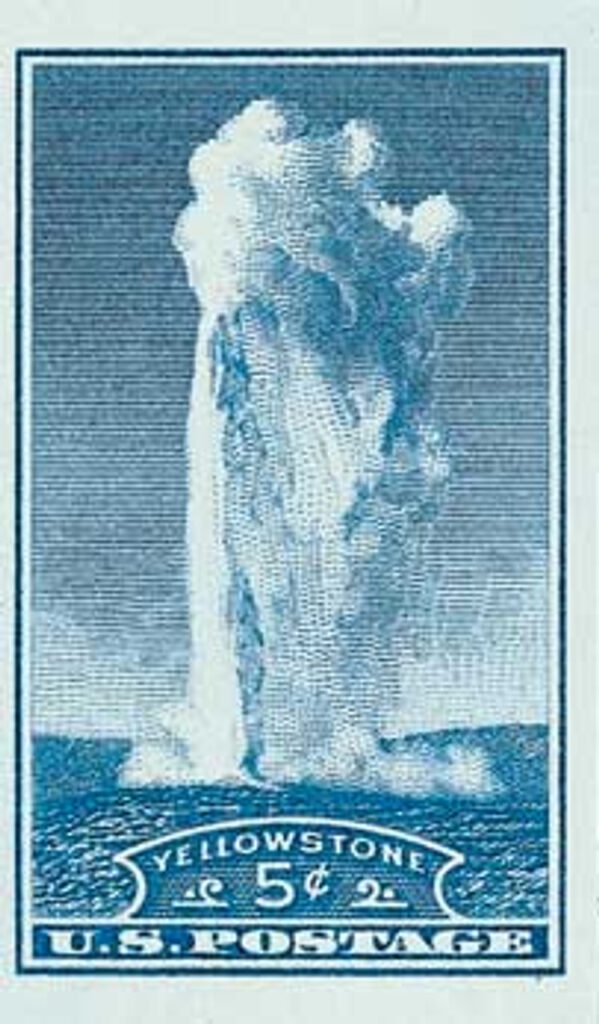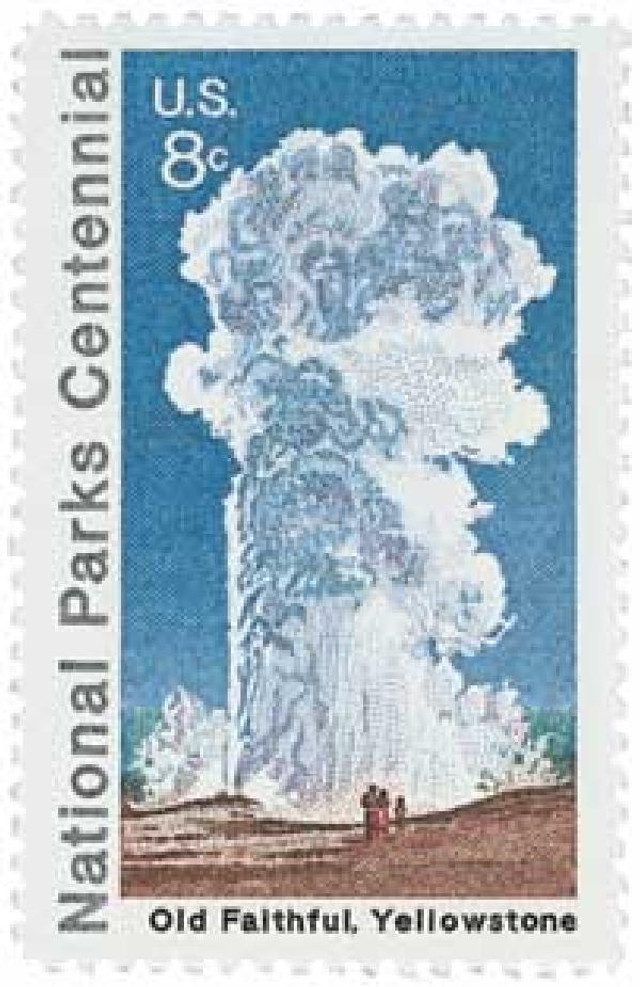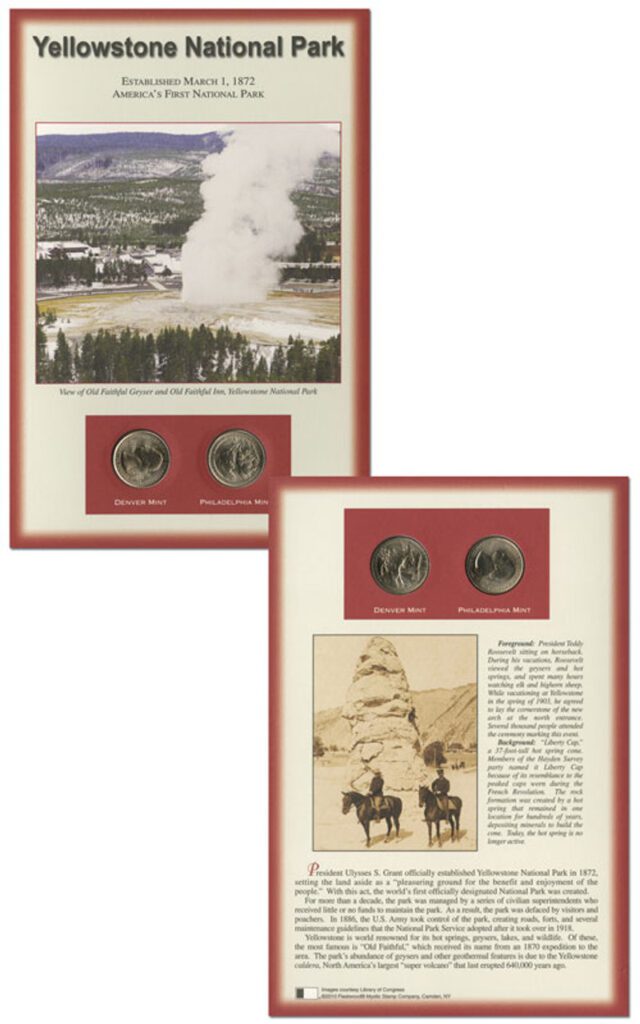
On September 18, 1870, a group of explorers stood on the banks of the Firehole River and watched as a geyser erupted in a towering column of steam and water. Amazed by its power and regularity, they gave it a name that has endured for more than 150 years — Old Faithful.
This moment was the culmination of decades of curiosity about the mysterious Yellowstone region. In the 1830s, legendary mountain man Jim Bridger returned from the remote wilderness of northwestern Wyoming with seemingly impossible stories. He told listeners about steaming hot pools, mud that bubbled like boiling stew, and even waterfalls that shot upward from the ground. Many dismissed his accounts as tall tales. The idea of fountains of water leaping from the earth sounded like pure fantasy. Yet others were intrigued and determined to find out if Bridger’s accounts were true.

Over the next several decades, explorers, fur trappers, and adventurers gradually brought back more evidence of Yellowstone’s geothermal marvels. By 1870, there was enough information to justify a formal, organized expedition. Surveyor General of Montana Henry D. Washburn assembled a party of 19 men to explore the region thoroughly. The group included prominent figures such as Nathaniel P. Langford, who would later become the first superintendent of Yellowstone, and Truman Everts, whose dramatic survival story after getting lost would become a legend in its own right. Their military escort was led by Lieutenant Gustavus C. Doane, who kept meticulous notes on the expedition.
The Washburn–Langford–Doane Expedition set out in late August 1870 and traveled for weeks through rugged terrain. Their journey was filled with remarkable discoveries—hot springs, fumaroles, and colorful pools unlike anything they had seen before. At one point, Langford wrote that they had come across “boiling sulfur springs” so hot that even gloved hands could not endure their heat. These experiences confirmed that the rumors they had heard were true: Yellowstone was home to natural wonders beyond imagination.
On September 18, the expedition followed the Firehole River to the Upper Geyser Basin. There, they encountered a geyser unlike any other. To their amazement, it erupted on a reliable schedule—something not seen with most other geysers. Nathaniel P. Langford carefully recorded the event in his journal, describing how it erupted nine times while they camped nearby, each column soaring between 90 and 125 feet into the air and lasting 15 to 20 minutes. Recognizing its unique regularity, the group christened it “Old Faithful.”
Just two years later, the discoveries of this and other expeditions inspired Congress to create the world’s first national park. In 1872, President Ulysses S. Grant signed legislation establishing Yellowstone National Park, protecting more than 3,400 square miles of wilderness and geothermal wonders for future generations. Old Faithful quickly became the park’s most famous feature and remains its most iconic symbol to this day.
Old Faithful continues to impress millions of visitors each year with its reliability and power. The geyser can shoot between 3,700 and 8,400 gallons of near-boiling water as high as 185 feet into the air during each eruption. These eruptions typically last from 1.5 to 5 minutes, and the interval between them usually falls between 35 and 120 minutes—so predictable that park rangers can still estimate eruption times with surprising accuracy. Scientists believe Old Faithful’s consistency is partly due to its independence from other thermal features in the Upper Geyser Basin, which allows pressure to build without interference.
Though it is not the tallest geyser in the park—that title belongs to the towering Steamboat Geyser—Old Faithful is by far the most famous. Today, the geyser sits at the heart of the Old Faithful Historic District, near the century-old Old Faithful Inn, where visitors gather to watch nature’s clockwork spectacle.
| FREE printable This Day in History album pages Download a PDF of today’s article. Get a binder or other supplies to create your This Day in History album. |
Click here for videos of Old Faithful and more from the NPS.
Discover what else happened on This Day in History.









When my husband and I visited in 1970’s, we were told the service was having trouble with visitors throwing things into geysers, thus creating blockages in some areas. They had to put up a fence to prevent anyone from getting close to Old Faithful. We all need to pay attention to how we treat whatever is in our area. Don’t destroy or mar what you can’t create.
There should be a mention of the 1959 Hebgen Lake Earthquake that changed old faithfuls regularity.
A great book on the saving of such national parks as Yellowstone, Yosemite etc, state parks, and city parks such as New York’s Central Park, is “The Power of Scenery; Frederick Law Olmstead and the Origin on National Parks”, by Dennis Drabelle (2021). As author Wallace Stegner once wrote (or said), “National Parks are the best idea America ever had.”